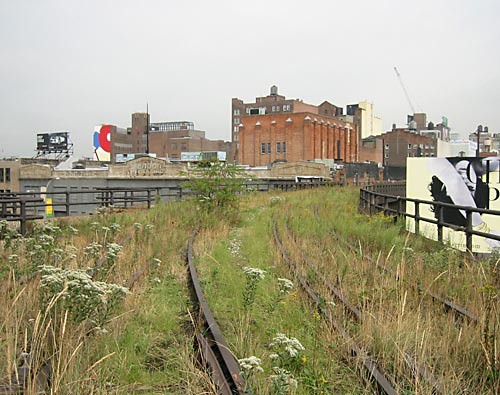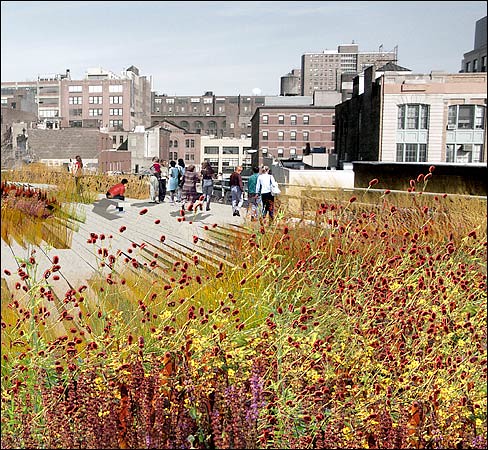It wasn't until the third panel, just before the MtV-meets-Blair-Witch video, that I had a Eureka moment: The High Line is that thing that goes over Chelsea! You know, the old railroady-looking thing that sometimes has billboards on it, that provides occasional peripheral confusion as you enter the next shiny gallery. The High Line is the thing that goes over Chelsea! All of the pictures and renderings that I had seen showed it from above, renovated and beautiful and detached from its surroundings in that peculiar architectural way, and I -- not always the brightest bulb -- had not connected it to the thing that goes over Chelsea. I was so pissed, and only slightly embarassed. I had to fight through the crowds to go back and read it again, and the summary impression I got is this: The High Line is that thing that goes over Chelsea. Diller, Scofidio, Renfro, Corner, et al*** are going to pave it and put in some new plants that are prettier than the wild plants. I am still not sure why it is such a big deal, or why it was so difficult for me to understand that the High Line is that thing that goes over Chelsea. (I blame my constant experiences of slowness, otherworldliness, and distraction.)
Now:

Later:

***Note: thanks to my tenure at the ICA I (heart) Diller + Scofidio + Renfro. I am more skeptical about Field Operations, mostly because the idea of theoretical landscape architecture confuses li'l ol' me and I am deeply skeptical about James Corner's ability to sucessfully plant a tree. But I guess that's not what landscape architects do. Silly me.
